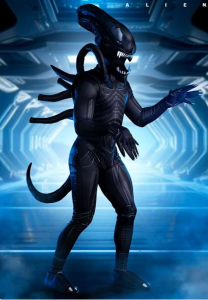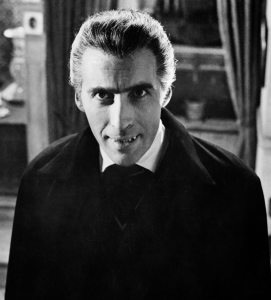NEW multi-million pound galleries featuring exhibits such as the xenomorph costume from the Alien movies and Dracula’s teeth will open at the National Science and Media Museum next week.
The museum re-opened after a £6.8m refurbishment earlier this year but work on some permanent galleries has continued behind closed doors.
Now the Sound and Vision Galleries is complete and will be unveiled to the public on July 10.
The galleries include some of the most significant artefacts in media history, including John Logie Baird’s experimental TV apparatus and the camera which captured the first moving images.
Five hundred exhibits will be spread out over two floors of the museum.

Image: Halloweencostume
And interactive displays will give visitors a chance to see the Cottingley Fairies up close, be a radio presenter, and mix a live gig using a mixing desk used by The Prodigy.
Work on the galleries have been carried out thanks to a grant from The National Lottery Heritage Fund.
Throughout the project, the museum has engaged and consulted with community leaders, access groups, young people and schools including SHINE West Bowling, Morley Street Resource Centre, and Bradford Deaf Centre.
Volunteers have also played a role in the project’s development, contributing over 1,900 hours of time to consultations and engagement activities.
In the first section of the galleries, ‘Innovation’, visitors will encounter some of the earliest examples of photographic, film and sound technologies and Europe’s first IMAX projector, first installed in the museum in 1983.
From displays telling the story of William Henry Fox Talbot’s earliest photographic negatives to Louis Le Prince’s single lens cine camera – which captured the world’s first moving film footage in Leeds – visitors can explore the origins of media technologies.
Other highlights include the camera used by Herbert Ponting to document Captain Scott’s Antarctic Expedition in 1910 and John Logie Baird’s groundbreaking experimental ‘television apparatus’ from 1926.
The ‘Identities’ section explores the countless ways that media technologies help us express who we are. It traces the development of photography from early portrait studios to the first popular cameras and the ongoing development of digital imagery.
In Gig Zone, visitors can explore the ways in which media technologies have enhanced our shared experience of live music, showcasing a mixing desk used by The Prodigy and the iconic Marshall amplifier stack.

Image: IMDb
The ‘Storytelling’ section of the galleries takes visitors on a journey through visual effects workshops, the sound worlds of Doctor Who via the Radiophonic Workshop, and the technical work of some of the world’s leading animation studios. Iconic horror film props are brought to life in an evocative display featuring Dracula’s fangs as worn by Christopher Lee and a model of the eponymous Alien head and torso from the 1979 film.
The museum’s prized Cottingley Fairies cameras and photographs will take centre stage in a special interactive installation.
The ‘Everywhere’ section asks how we got here and how media technologies have changed society. From the moon landings bringing people together en masse in front of the television to the media technologies we now carry in our pockets every day; visitors will explore how sound and vision technologies are a part of our everyday lives and affect how we interact with the world.
At the heart of the gallery is a newly commissioned artwork supported by Art Fund, ‘Circus’ by Nayan Kulkarni. The experience is inspired by Charlie Chaplin’s 1928 film The Circus, visitors move around a room of ‘digital mirrors’ — momentarily becoming part of the museum’s displays, highlighting our role in modern media technologies as both subject and creator.
As well as spotlighting hundreds of previously unseen exhibits, visitors who know the venue well will see echoes of the museum’s past, with a Dalek greeting them on Level 5, a new exhibit on loan from Aardman animation studios, and film footage of the museum’s now retired magic flying carpet, which was once a firm favourite with visitors.
Jo Quinton-Tulloch, Director of the National Science and Media Museum commented: “The galleries have been a true labour of love and collaboration, and they showcase our incredible collections in new and innovative ways.
“We have worked closely with a huge range of people to develop the galleries, ensuring these spaces work for everyone and that our visitors feel represented in the stories we tell.”




